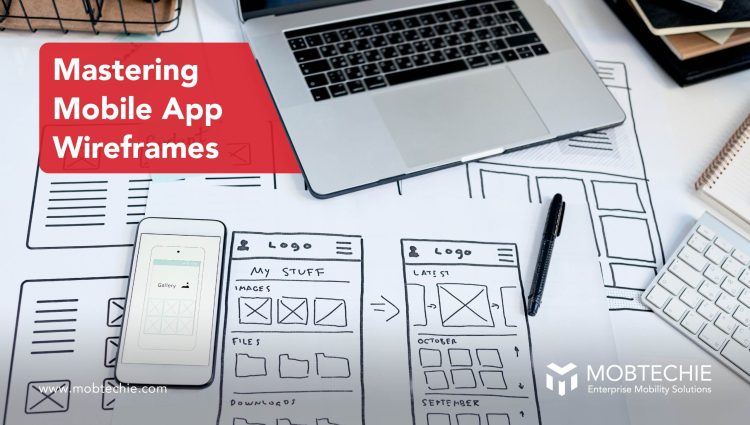Introduction
Are you envisioning your dream mobile app becoming a reality? The journey from concept to a fully functional app can be a challenging one, often plagued by misunderstandings and design missteps. However, fear not, as there’s a reliable way to overcome these hurdles and bring your appreneurial dreams to life. It all begins with creating a solid wireframe, serving as the guiding blueprint for your mobile app development project. In this article, we’ll delve into the significance of wireframes and how they help you communicate your vision effectively to app developers in Kochi.
What is a Wireframe?
Before we dive into the depths of wireframing, let’s establish a clear understanding of what a wireframe is. A wireframe is a visual representation of the essential elements within an application or website. These representations are often created in black and white, but their form is not limited to any specific color scheme. Wireframes can be crafted through both hand-drawn sketches and digital tools or software programs.
Why are Wireframes Essential?
Wireframes play a pivotal role in the early stages of the design process. They act as the foundation upon which your app’s functionality is built. Consider wireframes as the ‘bare bones’ of your app, while the design serves as its clothing. Moreover, wireframes are an invaluable tool for effectively communicating your vision to the mobile app development company in Kochi that you are partnering with.
The wireframing process is initiated at the project’s inception and is completed in a fraction of the time required for the actual design work. It’s akin to pointing your app designer in the right direction, guiding them in transforming your innovative idea into a fully operational mobile application.
The Role of Paper Prototyping
In the realm of app development, terms like “paper prototyping” and “wireframing” are often used interchangeably. Although there are differences in form and function, these terms represent the critical early stages of app development. Paper prototyping should be your next step after establishing the ‘who, why, and how’ of your app.
While some argue in favor of digital prototyping over the traditional pencil and paper, there is no denying the significance of the wireframing stage. It significantly reduces the likelihood of misunderstandings with third-party developers. Your app is your brainchild, and it deserves to be brought to life exactly as you envision it.
Here are some key steps to get you started:
- Treat it like a Blueprint, Include Descriptions: Just like an architect’s blueprint is vital for constructing a building, a detailed wireframe is crucial for your app’s design. Without a wireframe, your app developers in Kochi won’t have clear guidance on structuring navigation menus, image layout, and other essential elements. The more detailed and descriptive your wireframe is, the more likely your vision will be accurately mirrored in the final product. Include thorough descriptions of screen functions, how they work, and their intended outcomes.
- Hi-Fi Wireframing for Precision: High-fidelity (Hi-Fi) wireframes take wireframing to the next level by not only capturing the structure but also the app’s intended colors and tone. This approach leaves less room for interpretation, compared to simple hand-drawn sketches or low-fidelity (Lo-Fi) wireframes. While Hi-Fi wireframing may seem time-consuming, it empowers your designers to create a product that aligns closely with your vision.
- Check the Flow with Interactive Prototyping: Review your wireframes to ensure that all functions lead to their intended screens. Additionally, ensure that you’ve addressed potential error messages on specific screens, such as “Incorrect password.” Interactive prototyping is a valuable tool for this stage. It transforms your static designs into fully interactive prototypes. Utilize tools like Invision and Figma to create clickable mockups, providing a hands-on feel of how your app will work. Even if your wireframes are highly detailed, interactive prototyping allows you to make further adjustments and perfect your app.
- Cite Your Inspirations: If you’ve drawn inspiration from specific apps, make sure to share these references with your designers. Elements like design, user experience, and emotional appeal can be dissected and integrated into your own app’s design. By doing so, your designer will gain a deeper understanding of your desired outcome.
Conclusion
Translating your dream into a tangible app requires effective communication and a solid blueprint. Wireframing is the first step in this exciting journey, giving your app the structure it needs to thrive. By working closely with app developers in Kochi and following these wireframing best practices, you can set your mobile app project on the path to success. Remember, the wireframe is your app’s foundation, and when it’s strong, your app’s destination is almost guaranteed.
Mobtechie Labs
mobile app development company kochi app development company in kochi android app development company in kochi android app development company cochin






